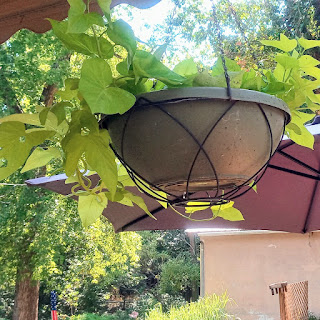Not all snakes are poisonous but if
you are not a snake expert then it’s a good idea to take steps to repel the snakes
from your yard and garden. Here are some
solutions that I have tried and found all of them to be effective snake-repellent
My home resides directly next to a densely
wooded area and this area has its share of copperheads, garden snakes, and other
snakes. All of these snakes assumed that
my yard was their habitat. Since my home is too close to a wooded area I knew I
needed to take steps to keep my yard snake free.
 |
| My side yard heavily wooded with dense brush |
If you live close to a park
or a wooded area then I recommend that you take steps to make your yard and
gardens unappealing to snakes before March.
Snakes typically come out of brumation (Brumation
is specific to reptiles and amphibians where they sleep deeply during the cold season)
in March or April depending on the
weather. If your temperature is an
average of 60 degrees then snakes will be out and about. The
snakes in my area are most active from May through October.
The best way to repel snakes from your yard and garden is to
make it unwelcoming and uncomfortable.
The first thing that we did was
clean up the clutter. We removed the down
trees that were in the side yard and moved the firewood, logs away from the
house. Stacked logs provide snakes a
safe place to hide.
 |
| Firewood provides hiding places for snakes |
The leaf debris in the side yard that
was on the limestone rocks was blown off and the rocks then we bought pea
gravel from Lowes and added this rock to this area. Snakes don’t like crossing rock so the
smaller rock created a barrier for us to keep the snakes in the woods and out
of our yard.
Another way to keep your yard snake-free is to clear all brush and avoid growing dense gardens like daylilies or
irises grown in masses. A manicured garden with good airflow between plants rather
than dense vegetation is a great way to eliminate places for snakes to hide.
 |
| My Iris garden with lilies growing behind. too dense needed to thin out |
Because snakes eat small animals like
mice, lizards, and birds you would want to remove your bird feeders as they are
attracting the snakes to your yard.
The best way to keep snakes out of your
yard is to install a fence that the snake cannot penetrate. An aluminum or a metal mesh would be
best. They are strong enough to keep the
snakes out of your yard. It's like chicken wire, but stronger with a small
opening. It's best to install the fence so that it's 30 inches
above the soil line to prevent the snake from climbing over. Higher than 30 inches would be better.
You also want to dig a ditch in the
soil to put the bottom of the fence into the ditch then add quick-drying cement
to secure the bottom of the fence in the ditch.
By cementing the bottom of the fence, you will prevent the snake from getting
into your yard from the soil line.
Keep the snakes out of your yard with
natural cedarwood, clove, and cinnamon bark or oil. A few years ago, I had a snake in my garden
and put down highly aromatic natural cedar mulch and the snakes left my yard
and garden.
Cedarwood has a strong smell that snakes dislike
Here is a snake repellent product that
I found online at Amazon Exterminators
Choice - Snake Defense Spray - Non-Toxic Repellent for Pest Control - Repels
Most Common Type Snakes - Safe for Kids and Pets - Cinnamon Scented








































